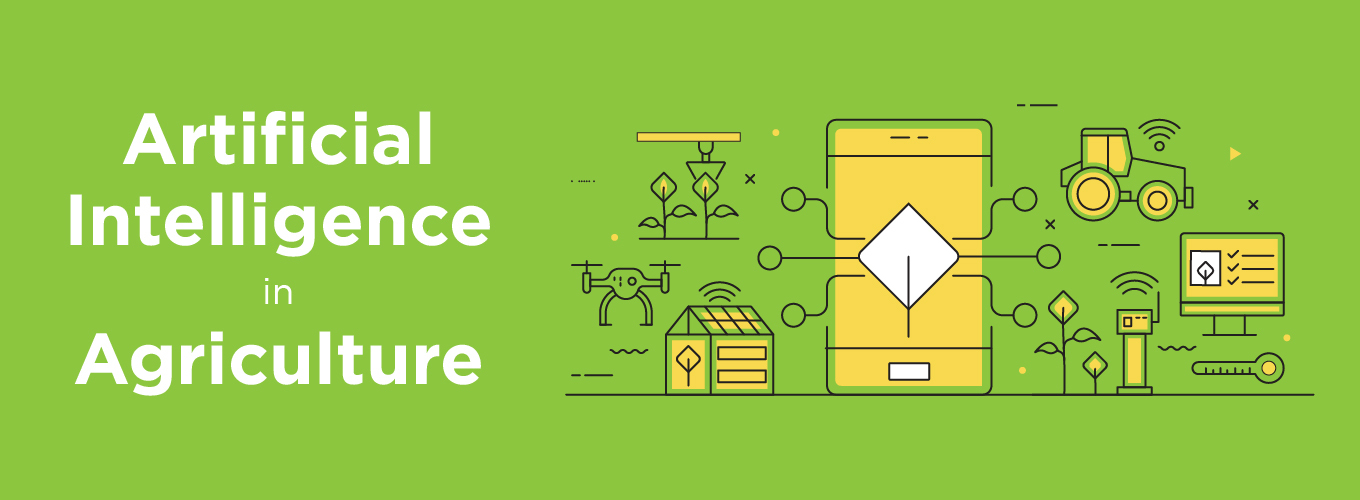Artificial Intelligence in Agriculture
India is an agricultural economy. In other words, Agriculture is the primary sector of India’s economy, and Agriculture, livestock, and associated industries contribute to more than 20% of the nation’s GDP. Yet, Agriculture remains at the mercy of predominantly uncontrollable factors such as weather, soil health, geopolitical issues affecting yield price, pesticide/herbicide usage, crop health, water quality, amount of sunlight, and more. Furthermore, the UN projects the global population to increase from 7.5 billion to 9.5 billion by 2050, while available tillable land is only 4%. Global food production will increase by 60% to cater to this demand making the need for real-time actionable data, insights, and increased efficiency imperative.
Enter artificial intelligence or AI, which may prove to be a silver bullet that might redefine agriculture at every level. AI will improve efficiencies, quantity, and quality, enabling a faster go-to-market for crops.
What areas will AI redefine? Right from using robots for human-less harvesting, delivering predictive analytics for soil, crop, and weather forecasting, computer vision for identifying unhealthy/ailing crop varieties, and image recognition software to identify common crop diseases before it is too late are a few solutions.
Also Read: Top 5 Agritech Startups In India
Let us explore the most significant developments AI has introduced in agriculture.
- Crop and Soil Monitoring – Micronutrients and Macronutrients are essential to optimize production efficiency. Additionally, it is important to monitor the stages of growth and the interactions between the soil and the crop to ensure optimum yield. These interactions, monitored manually previously, were inaccurate. However, today, we can use UAV drones to capture aerial image data and computer vision for intelligent crop and soil monitoring. AI models can inform farmers of specific crop and soil problems in the nick of time to take corrective action.
- Observing Crop Maturity – Manual observation of crops during their growth stage is manual and labor-intensive. AI can help enable precision and accuracy and reduces manual intervention. Scientists have achieved this through image recognition and computer vision. By feeding the machine with a huge volume of crop data, the AI engine learns to recognize images of crops at different stages and identify the growth stage of a particular crop, helping farmers make informed decisions.
- Agriculture Robotics – Robots are used for various tasks in farming – checking the quality of crops, detecting and controlling weeds, and harvesting the crop faster than human beings. These robots are faster, more accurate, and can work in all weather conditions.
- Intelligent Spraying – AI sensors can detect weed and weed-affected areas. Precision identification of weed-infested areas can enable accurate spraying of herbicides and pesticides, reducing the impact on crops and the cost of using pesticides.
- Smart Farming – Precision farming leverages predictive analysis and real-time data-driven insights to provide farmers with the right insights at the right time. Smart farming can also automate repetitive tasks and reduce manual labor.
- Producing grading and sorting – Grading and sorting is one of the most important aspects of farming because it is the deciding factor that ensures quality produce hits the shelves. Computers can identify defects, bad products, and quality issues with computer vision and image recognition.
- Aerial Surveillance – AI can help farmers monitor their lands and livestock remotely through computer vision and drones to ensure nothing is amiss.
There are many more advantages of Artificial Intelligence in agriculture, and it is inevitably going to redefine agriculture in the years to come. Continue to read Xpheno Blogs for up-to-date information about the agritech industry and related jobs.










